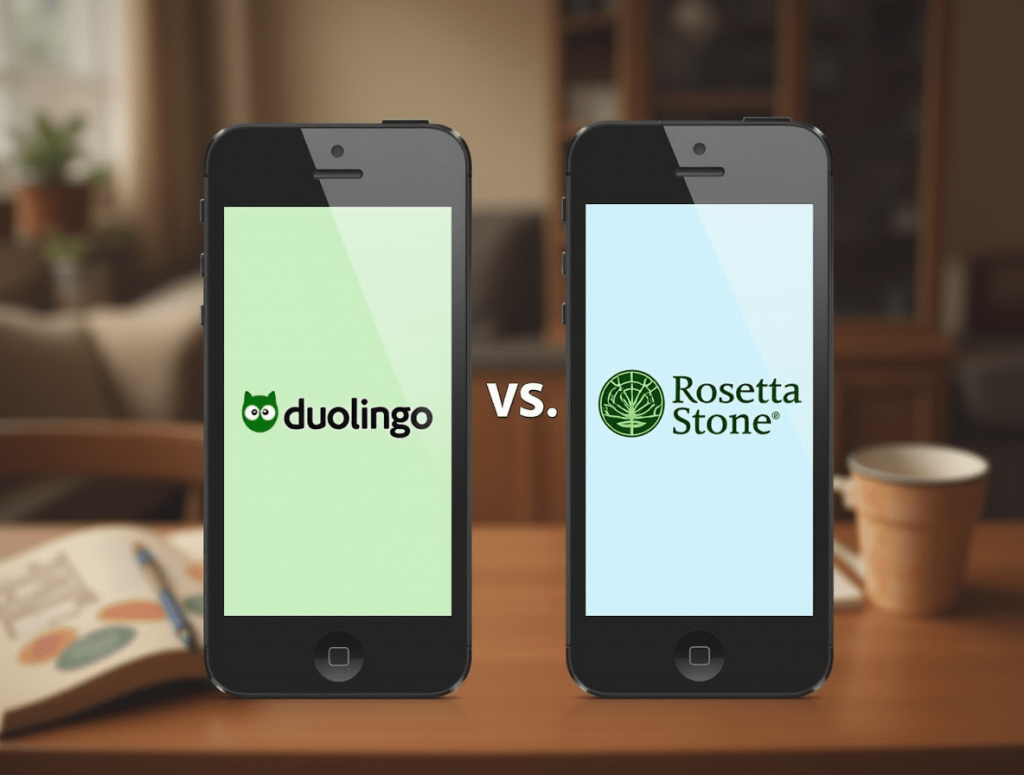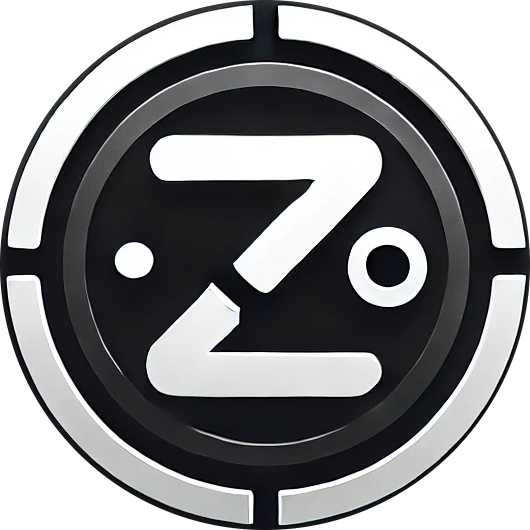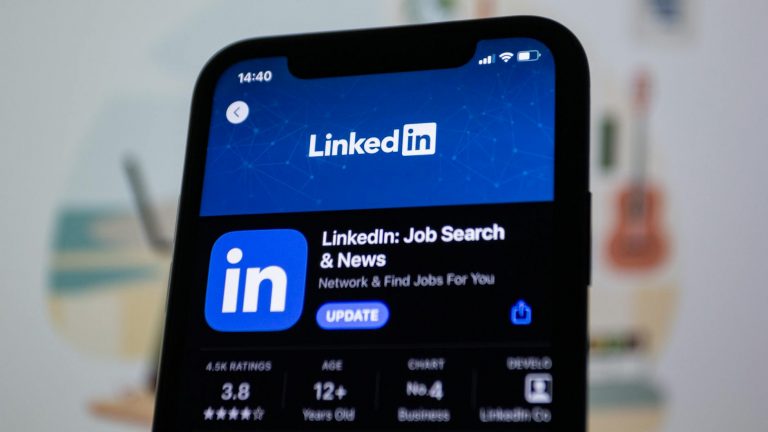
Which Language Learning App Actually Works Best?
Have you ever downloaded a language learning app with high hopes, only to abandon it weeks later with barely any progress to show? You’re not alone—studies show that while 73% of adults want to learn another language, only 15% successfully reach conversational fluency through digital methods. The difference often comes down to choosing the right learning platform that matches your specific needs and learning style.
Duolingo and Rosetta Stone stand as two giants in the language learning space, with radically different approaches to teaching and engagement. One uses gamification and bite-sized lessons that fit into busy schedules, while the other employs immersion techniques that mimic how we naturally learn languages as children. But which method actually works better for adult learners? And more importantly, which will work better for you?
This comprehensive guide cuts through the marketing claims to compare these platforms across methodology, effectiveness, cost, and user experience, helping you make an informed decision before investing your time and money.
Core Learning Approaches: Fundamentally Different Philosophies
Duolingo’s Gamified Microlearning Method
Duolingo, launched in 2011, pioneered the gamification of language learning with a system built around:
- Bite-sized lessons: 5-10 minute exercises designed for daily practice
- Game mechanics: Experience points, streaks, leagues, and rewards that create habit-forming behaviors
- Progressive difficulty: Skill trees that gradually introduce new concepts
- Mixed exercise types: Translation, listening, speaking, and multiple-choice questions
- Spaced repetition: Algorithmic review of previously learned material based on mistake patterns
The platform’s design is grounded in cognitive science principles of microlearning and distributed practice, theoretically allowing users to accumulate language skills in small, manageable increments that fit into busy schedules.
Rosetta Stone’s Natural Immersion Approach
Rosetta Stone, with origins dating back to 1992, employs a distinctly different methodology focused on:
- Complete immersion: No translations or explanations in your native language
- Intuitive learning: Associating words and concepts directly with images and sounds
- Pattern recognition: Learning grammar implicitly through exposure rather than explicit rules
- Structured progression: Carefully sequenced content building from simple to complex
- Speech recognition: TruAccent technology that provides pronunciation feedback
This approach is based on the concept of “dynamic immersion,” which aims to replicate how children naturally acquire their first language—through context, association, and repetition without translation.
Language Offerings and Depth of Content
Duolingo’s Language Catalog
Duolingo currently offers courses in 41 languages for English speakers, with popular options including:
- Spanish, French, Japanese, German, Italian, Korean
- Less commonly taught languages like Hawaiian, Navajo, and High Valyrian
- Constructed languages like Esperanto and Klingon
The depth of content varies significantly by language:
- Major languages (Spanish, French): Approximately 150-200 hours of content
- Mid-tier languages (Russian, Japanese): Approximately 60-120 hours
- Smaller language courses (Hawaiian, Swahili): 20-40 hours
According to Duolingo’s 2024 efficacy studies, completing a major language course is roughly equivalent to four university semesters of language study, theoretically bringing users to an intermediate (B1) level.
Rosetta Stone’s Language Catalog
Rosetta Stone offers a more focused selection of 25 languages, including:
- Major world languages: Spanish, French, Japanese, German, Italian
- Business-oriented options: Mandarin Chinese, Arabic, Russian
- Heritage languages: Irish, Hebrew, Persian (Farsi)
The content depth is more consistent across languages:
- Each language offers approximately 120-200 hours of structured content
- Core lessons are supplemented with stories, phrasebooks, and audio companions
- All languages follow the same pedagogical structure and progression
Independent linguistic analyses suggest that completing all levels of a Rosetta Stone program generally brings learners to a strong A2 or beginning B1 level on the CEFR scale.
Effectiveness for Different Learning Goals
Language Acquisition Research Findings
Studies on both platforms have produced mixed results depending on learning contexts:
- A 2023 study in the Journal of Computer Assisted Language Learning found that Duolingo users demonstrated strong vocabulary retention but weaker grammatical understanding compared to traditional classes.
- Research published by the University of Waterloo in 2024 suggested that Rosetta Stone users developed better listening comprehension and pronunciation than those using translation-based apps.
- Neither platform consistently produces advanced (C1-C2) speakers without supplementary practice.
Effectiveness for Different Learning Goals
For Casual Vocabulary Building and Basic Phrases
Duolingo Advantage: The gamified approach provides better motivation for consistent practice, with users averaging 3-4 sessions per week compared to Rosetta Stone’s 1-2 sessions.
For Pronunciation Development
Rosetta Stone Advantage: The TruAccent speech recognition technology consistently outperforms Duolingo’s speech recognition in accuracy and feedback specificity, according to comparative studies.
For Grammar Mastery
Mixed Results: Duolingo’s recent “Tips” feature has improved explicit grammar instruction, while Rosetta Stone’s immersion approach leads to more intuitive but sometimes incomplete grammatical understanding.
For Conversational Fluency
Neither Excels: Both platforms have limitations in developing spontaneous speaking abilities, with conversation practice being the most frequently cited weakness in user surveys.
User Experience and Interface Comparison
Duolingo’s User Experience
Duolingo’s interface prioritizes engagement and retention:
- Visual Design: Colorful, cartoon-style illustrations with the iconic owl mascot
- Session Structure: Short lessons (5-10 minutes) with immediate feedback
- Progression System: Visible skill trees with clear advancement paths
- Social Features: Leaderboards, friends, achievements, and challenges
- Mobile Optimization: Primarily designed for mobile with seamless cross-device synchronization
User engagement statistics are impressive, with 42% of users still active after 30 days (compared to the industry average of 7-9% for educational apps).
Rosetta Stone’s User Experience
Rosetta Stone offers a more serious, education-focused experience:
- Visual Design: Clean, professional photography with minimal distractions
- Session Structure: Longer, more concentrated lessons (20-30 minutes)
- Progression System: Linear core lessons with supplementary activities
- Social Features: Limited, with optional online tutoring as an add-on
- Platform Flexibility: Equally optimized for desktop and mobile learning
The platform shows a lower 30-day retention rate at 28%, but users who continue beyond 60 days show higher completion rates of core content (38% vs. Duolingo’s 19%).
Pricing Models and Value Analysis
Duolingo’s Pricing Structure
Duolingo operates on a freemium model:
- Free Tier: Access to all lessons with advertisements and limited features
- Duolingo Plus: $12.99/month or $79.99/year, removing ads and adding offline access
- Family Plan: $119.99/year for up to 6 family members
- Classroom: Free for educators and their students
The free tier provides full access to course content with some limitations:
- Limited daily mistakes before progress is paused
- Advertisements between lessons
- No offline access
- Limited practice exercises
According to Duolingo’s internal data, approximately 5% of active users subscribe to Duolingo Plus.
Rosetta Stone’s Pricing Structure
Rosetta Stone uses a subscription model:
- 3-Month Access: $11.99/month (single language)
- 12-Month Access: $7.99/month (single language)
- Lifetime Access: One-time payment of $179-$199 (all languages)
- Enterprise: Custom pricing for organizations
All subscriptions include:
- Full access to chosen language(s)
- TruAccent speech recognition
- Offline access via mobile app
- Phrasebook and stories features
Based on average course completion times, the effective cost per hour of learning ranges from $0.80-$1.20 for Rosetta Stone compared to $0.40-$0.60 for Duolingo Plus.
Learning Pace and Time Commitment
Duolingo’s Flexibility
Duolingo is designed for flexible, inconsistent schedules:
- Recommended Daily Practice: 10-15 minutes
- Lesson Length: 5-10 minutes per session
- Commitment Level: Low barrier to entry with minimal time requirement
- Completion Timeline: Highly variable (3-24 months), dependent on consistency
- Skill Decay: System reminds users of weakening skills that need review
This approach works well for busy professionals and casual learners who prefer shorter, more frequent interactions.
Rosetta Stone’s Structured Approach
Rosetta Stone requires more dedicated study time:
- Recommended Daily Practice: 30-45 minutes
- Lesson Length: 20-30 minutes per core lesson
- Commitment Level: Moderate, requiring focused attention
- Completion Timeline: More predictable (6-12 months with consistent use)
- Skill Decay: Less emphasis on spaced repetition, more on sequential mastery
This structure tends to appeal to more dedicated language learners with specific goals and dedicated study time.
Supplementary Features Comparison
Duolingo’s Additional Learning Tools
Beyond the core lessons, Duolingo offers:
- Stories: Interactive reading exercises with comprehension checks
- Podcasts: Available for Spanish and French learners
- Events: Virtual meetups for practice with other learners
- Dictionary: Contextual word lookups and example sentences
- Duolingo ABC: Separate app for literacy development (primarily for children)
According to user engagement data, only about 22% of Duolingo users utilize these supplementary features regularly.
Rosetta Stone’s Additional Learning Tools
Rosetta Stone supplements its core program with:
- Live Tutoring: Optional group sessions with native speakers (additional cost)
- Phrasebook: Practical expressions with audio pronunciation
- Audio Companion: Downloadable lessons for listening practice
- Seek & Speak: AR feature that identifies objects for vocabulary practice
- Extended Learning: Reading and listening exercises beyond core content
Approximately 35% of subscribers utilize at least one supplementary feature, with the Audio Companion being the most popular.
Which Platform Is Right For You?
Choose Duolingo If:
- You struggle with motivation and consistency in learning
- You have limited time and prefer short, frequent practice sessions
- You’re on a tight budget and willing to tolerate advertisements
- You enjoy game-like elements and competitive features
- You’re interested in less commonly taught languages
- You prefer learning grammar rules explicitly
- You want to maintain multiple languages simultaneously
Choose Rosetta Stone If:
- You prefer immersive learning without translation crutches
- You can dedicate longer, focused study sessions
- You value high-quality pronunciation feedback
- You’re learning one language with serious intent
- You dislike gamification and prefer a clean, professional interface
- You struggle with grammatical explanations and prefer intuitive learning
- You’re willing to pay for a comprehensive system with proven history
Conclusion
The choice between Duolingo and Rosetta Stone ultimately reflects your personal learning style, schedule constraints, and language learning goals. Duolingo excels at keeping users engaged through clever gamification and bite-sized content, making it an excellent choice for busy individuals who might otherwise abandon their language learning journey. Its free tier provides remarkable value, though serious learners will benefit from the Plus subscription.
Rosetta Stone offers a more immersive, structured approach that may better prepare users for real-world listening and speaking scenarios, particularly in pronunciation. Its higher price point reflects its comprehensive methodology and polish, though the lifetime access option provides excellent long-term value for committed language enthusiasts.
Many successful language learners report using both platforms complementarily—Duolingo for daily practice and vocabulary reinforcement, supplemented with Rosetta Stone’s more immersive approach for dedicated study sessions. This combined method leverages the strengths of each system while mitigating their respective weaknesses.
Whichever platform you choose, remember that consistent practice—rather than the specific app—remains the most critical factor in language learning success. Both Duolingo and Rosetta Stone can provide effective frameworks for that practice when used consistently as part of a broader language learning strategy.
FAQ Section
How long does it take to become fluent using these apps?
Neither app guarantees fluency on its own. Research suggests achieving B1 (intermediate) level requires approximately 200-300 hours of study with supplementary conversation practice. Duolingo estimates 120+ hours for basic proficiency in Spanish for English speakers, while Rosetta Stone suggests 150+ hours for comparable results.
Do these apps work for all age groups?
Both platforms are designed primarily for adult learners. Duolingo is more accessible to teenagers with its game-like elements, while Rosetta Stone’s interface and pacing may better suit adults with longer attention spans. Neither is optimally designed for young children under 10.
Can I really learn a language without paying?
Duolingo’s free tier provides access to complete courses with some limitations. Many users successfully learn basic to intermediate skills without paying. Rosetta Stone requires payment after a limited trial period.
Which platform is better for Asian languages like Japanese or Chinese?
For Asian languages that use non-Latin scripts, Duolingo provides more explicit instruction about writing systems, while Rosetta Stone focuses more on speaking and listening. User surveys indicate higher satisfaction with Duolingo for Japanese and Mandarin, partly due to its explicit character instruction.
Do employers or universities recognize completion certificates?
Neither platform’s certificates are widely recognized for official language proficiency requirements. They’re better viewed as personal achievements rather than credentials. For official recognition, standardized tests like TOEFL, IELTS, DELF, or JLPT are required.
Can I switch between languages freely?
Duolingo allows free switching between all languages at any time. Rosetta Stone subscriptions are typically limited to one language unless you purchase the lifetime all-languages package.














